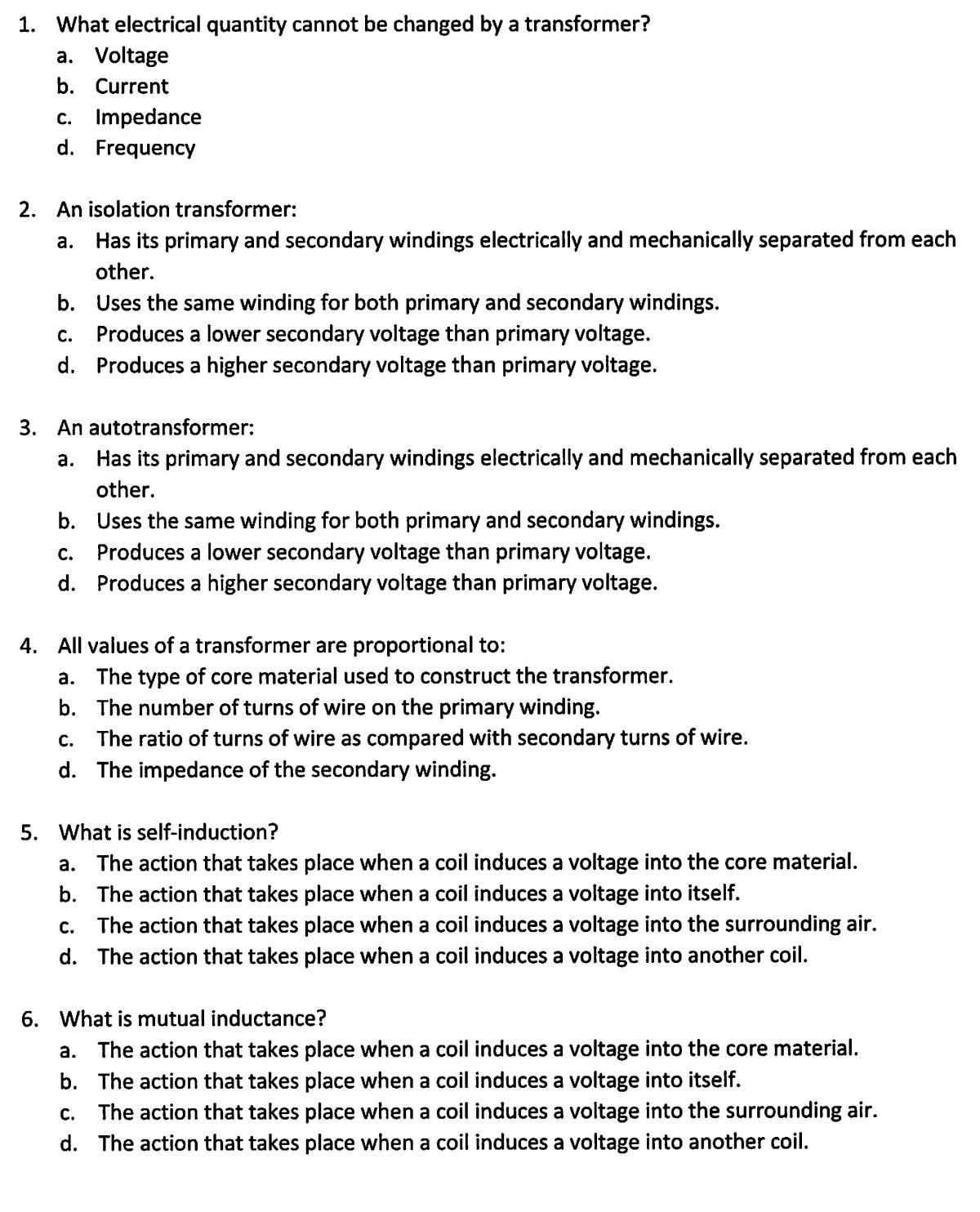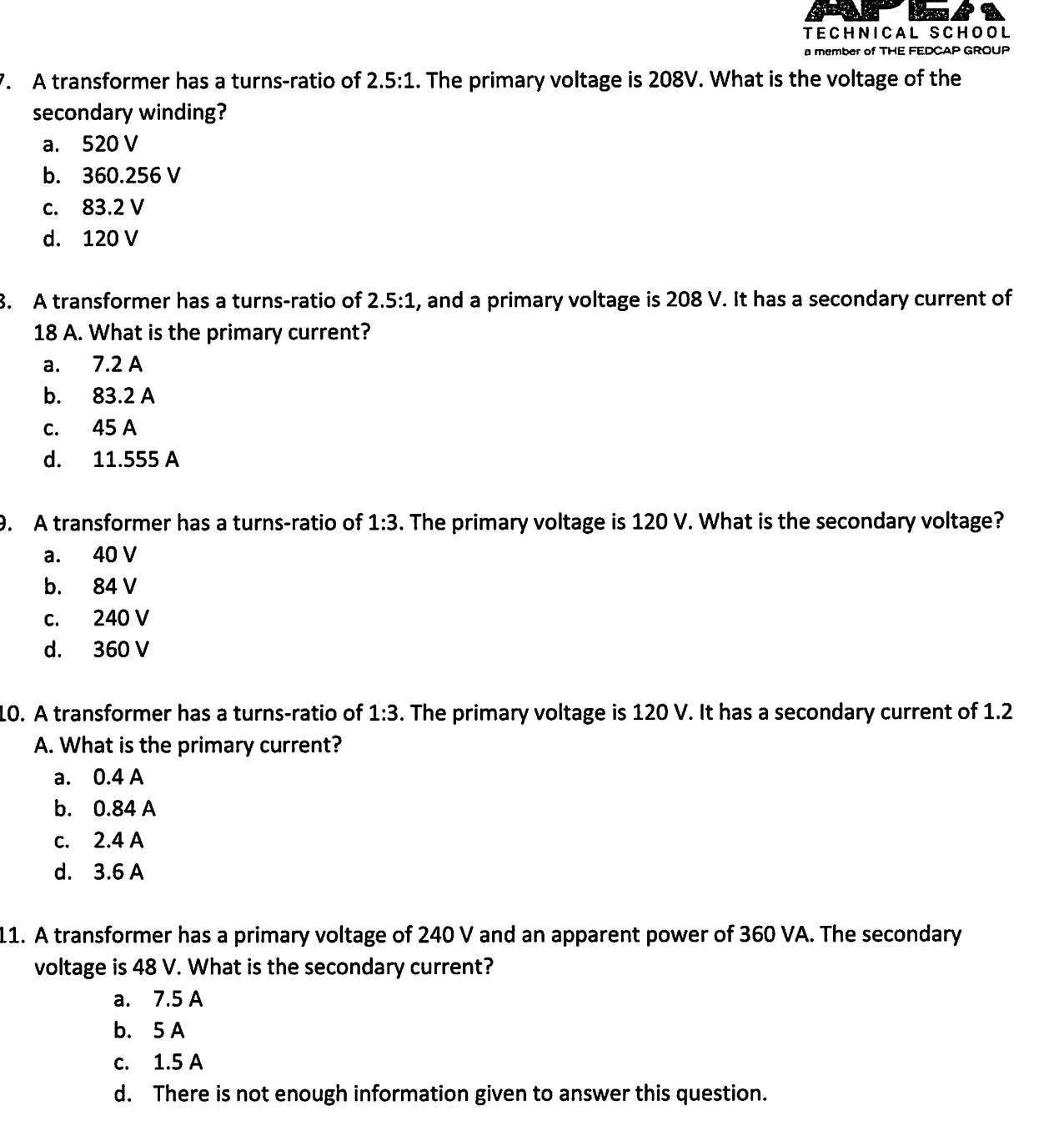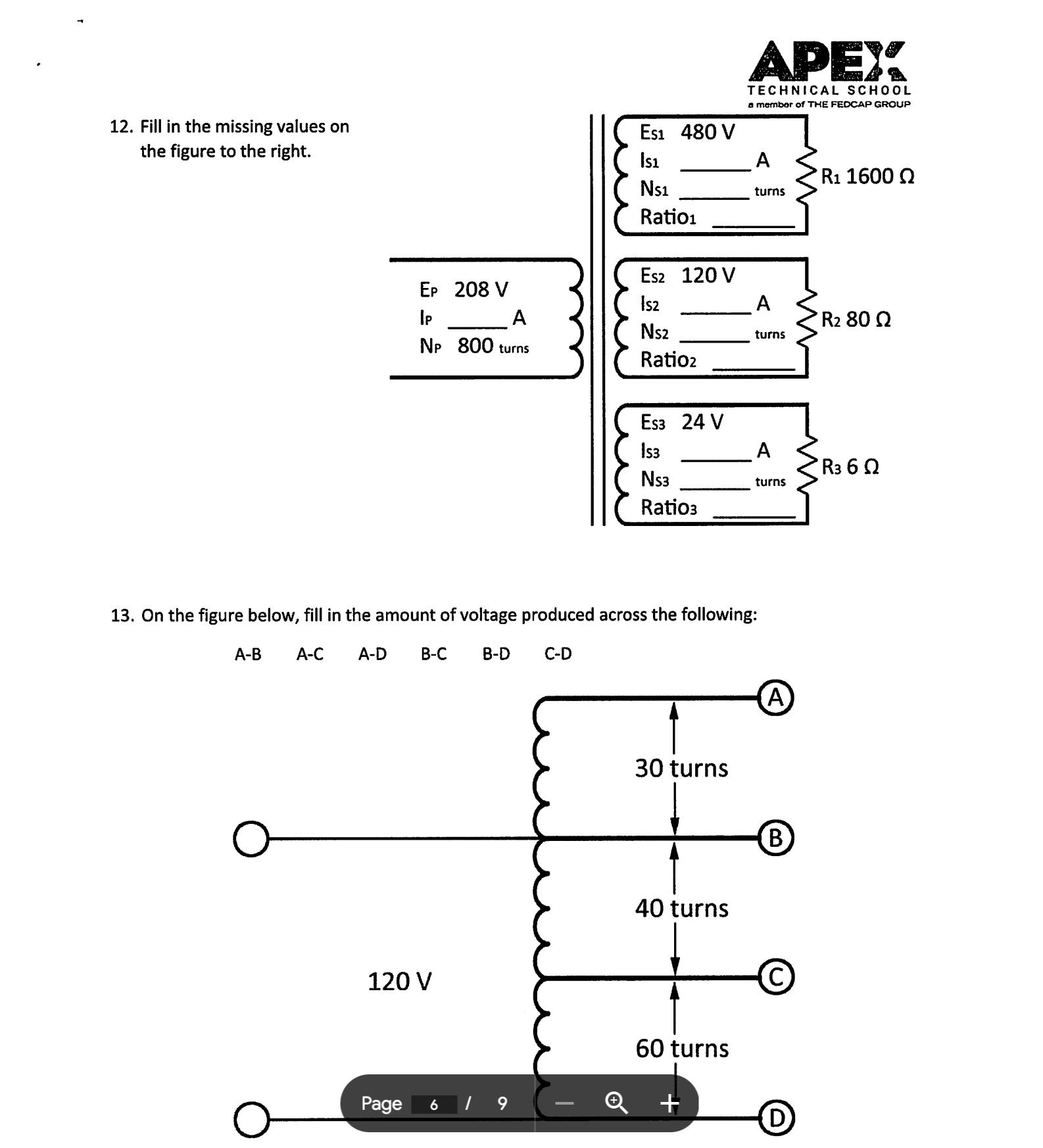Answered step by step
Verified Expert Solution
Question
1 Approved Answer
1. What electrical quantity cannot be changed by a transformer? a. Voltage b. Current c. Impedance d. Frequency 2. An isolation transformer: a. Has



1. What electrical quantity cannot be changed by a transformer? a. Voltage b. Current c. Impedance d. Frequency 2. An isolation transformer: a. Has its primary and secondary windings electrically and mechanically separated from each other. b. Uses the same winding for both primary and secondary windings. C. Produces a lower secondary voltage than primary voltage. d. Produces a higher secondary voltage than primary voltage. 3. An autotransformer: a. Has its primary and secondary windings electrically and mechanically separated from each other. b. Uses the same winding for both primary and secondary windings. C. Produces a lower secondary voltage than primary voltage. d. Produces a higher secondary voltage than primary voltage. 4. All values of a transformer are proportional to: a. The type of core material used to construct the transformer. b. The number of turns of wire on the primary winding. C. The ratio of turns of wire as compared with secondary turns of wire. d. The impedance of the secondary winding. 5. What is self-induction? a. The action that takes place when a coil induces a voltage into the core material. b. The action that takes place when a coil induces a voltage into itself. C. The action that takes place when a coil induces a voltage into the surrounding air. d. The action that takes place when a coil induces a voltage into another coil. 6. What is mutual inductance? a. The action that takes place when a coil induces a voltage into the core material. b. The action that takes place when a coil induces a voltage into itself. C. The action that takes place when a coil induces a voltage into the surrounding air. d. The action that takes place when a coil induces a voltage into another coil. TECHNICAL SCHOOL a member of THE FEDCAP GROUP 7. A transformer has a turns-ratio of 2.5:1. The primary voltage is 208V. What is the voltage of the secondary winding? a. 520 V b. 360.256 V C. d. a. b. 3. A transformer has a turns-ratio of 2.5:1, and a primary voltage is 208 V. It has a secondary current of 18 A. What is the primary current? 7.2 A 83.2 A 45 A 11.555 A C. d. a. b. 83.2 V 120 V 9. A transformer has a turns-ratio of 1:3. The primary voltage is 120 V. What is the secondary voltage? 40 V 84 V 240 V 360 V C. d. S C. d. LO. A transformer has a turns-ratio of 1:3. The primary voltage is 120 V. It has a secondary current of 1.2 A. What is the primary current? a. 0.4 A b. 0.84 A 2.4 A 3.6 A 11. A transformer has a primary voltage of 240 V and an apparent power of 360 VA. The secondary voltage is 48 V. What is the secondary current? a. 7.5 A b. 5 A C. 1.5 A d. There is not enough information given to answer this question. 12. Fill in the missing values on the figure to the right. EP 208 V Ip A NP 800 turns 120 V Es1 480 V Is Ns1 Ratio1 Page 619 Es2 120 V Isz NS2 Ratio2 Es3 24 V IS3 NS3 Ratio3 30 turns 40 turns 60 turns APEX TECHNICAL SCHOOL a member of THE FEDCAP GROUP 13. On the figure below, fill in the amount of voltage produced across the following: A-B A-C A-D B-C B-D C-D + A turns A turns A turns A B (D) R 1600 Q 'R2 80 Q R3 6
Step by Step Solution
★★★★★
3.29 Rating (149 Votes )
There are 3 Steps involved in it
Step: 1
1 The correct answer is d Frequency The frequency of an electrical signal cannot be changed by a transformer Transformers operate on the principle of ...
Get Instant Access to Expert-Tailored Solutions
See step-by-step solutions with expert insights and AI powered tools for academic success
Step: 2

Step: 3

Ace Your Homework with AI
Get the answers you need in no time with our AI-driven, step-by-step assistance
Get Started


